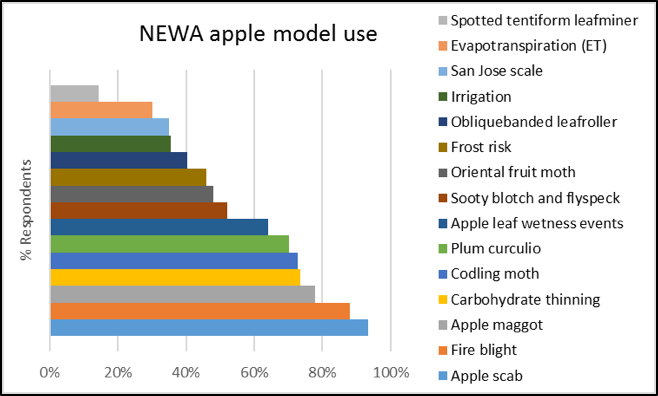Media contact: Juliet E. Carroll | Office: 315-787-2430 | jec3@cornell.edu
For photos: nysipm.cornell.edu/about/we-give-awards/2018-excellence-ipm-award-winners/keith-eggleston/
GENEVA NY, January 17, 2019: Keith Eggleston, a climatologist with the Northeast Regional Climate Center (NRCC) received an Excellence in Integrated Pest Management (IPM) Award from the New York State Integrated Pest Management Program (NYSIPM) at the Empire State Producers’ Expo in Syracuse. NYSIPM develops sustainable ways to manage pests and helps people to use methods that minimize environmental, health and economic risks. The award honors individuals who encourage the adoption of IPM in their businesses, schools, communities, and farms, and who develop new tools and tactics for sharing these practices.
Begun in 1995 by NYSIPM, the Network for Environment and Weather App’s (NEWA) delivers weather information from farm-based weather stations from Minnesota to New Hampshire to North Carolina, and feeds it into more than 40 pest forecasting and crop production tools. NEWA’s weather data summaries and IPM forecasts give farmers the best information to make scientifically based decisions about how to best manage pests. NEWA is highly valued by New York fruit and vegetable growers—largely thanks to Eggleston’s diligence and expertise.
How did Eggleston help? He wrote the code for the IPM forecast models on NEWA’s website, newa.cornell.edu. Successful? Yes! These IPM tools work so well that NEWA expanded from around 40 to over 600 weather stations and from one state to 14. The pest forecasts help farmers in NY and other states predict when pests might strike and how severe that strike might be—saving them both from spraying and from losing sleep.
Dan Olmstead, NEWA Coordinator, notes that “Keith’s understanding of programming languages, weather, climate, and the NEWA users themselves serves as a foundation for our collaborative success.”
Eggleston’s colleagues admire his insights into the nuances of climate data, and his eternal vigilance regarding bug fixes, stalled models, and metadata rescue. They have referred to him as a ‘miracle worker’ and ‘tech guru’. Put more simply: Eggleston makes sure that users are happy and NEWA data and model outputs are of the highest quality.
Eggleston has a unique perspective on agriculture—his father was a Vocational Ag teacher and FFA Advisor; he himself a member of the agricultural fraternity, Alpha Zeta, at Cornell University. “I have always had an affinity for agriculture and have found it very satisfying to be able to help develop models that will be useful in the farming community,” he said.
Olmstead added, “Keith’s real strength comes from his endless patience, calm thinking, collaborative spirit, and tenacity—all of which creates synergy… NEWA continues to grow rapidly because the tools Keith built stand the test of time and end-user scrutiny.”
Art DeGaetano, director of the NRCC, characterized Eggleston as the glue that connects NEWA and NRCC. He said, “Among the scientists involved with NEWA, Keith is the trusted voice …concerning how a model should be implemented, the design of the model, or even the proper data to use, Keith’s respectful expertise is the catalyst for reaching common ground and achieving excellence.”
Learn more about Integrated Pest Management at nysipm.cornell.edu.

